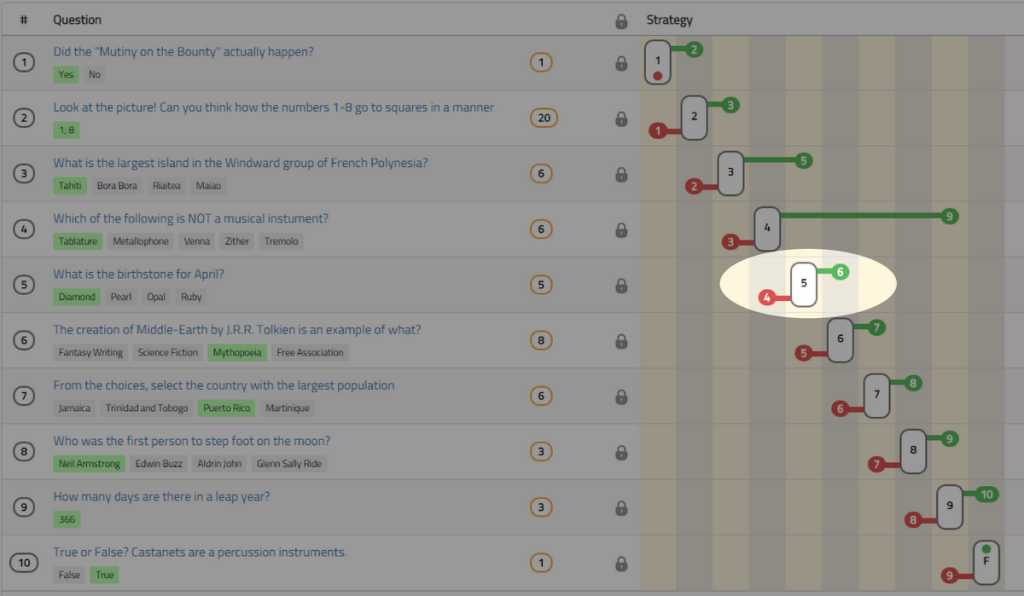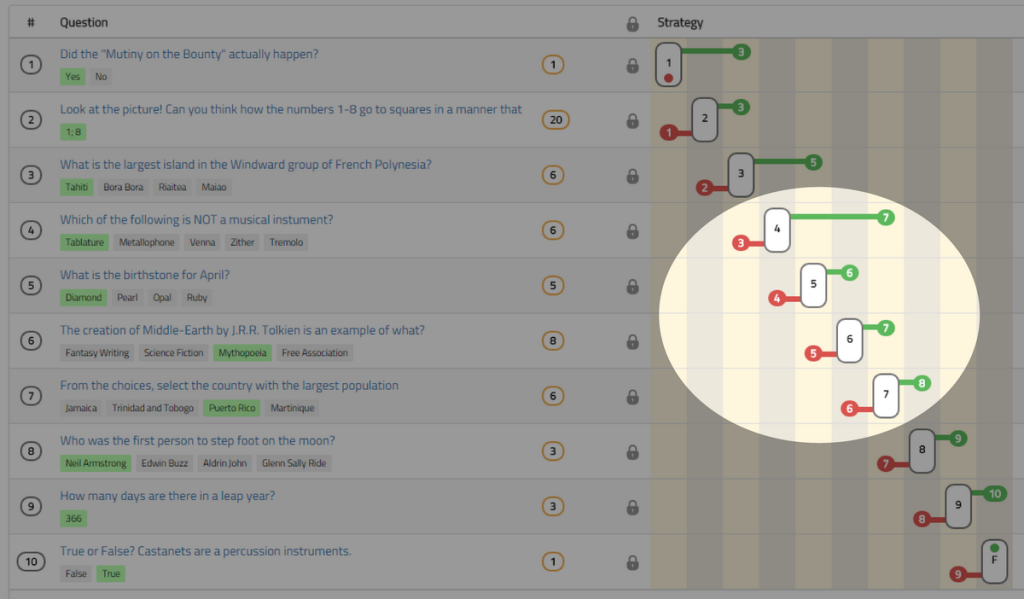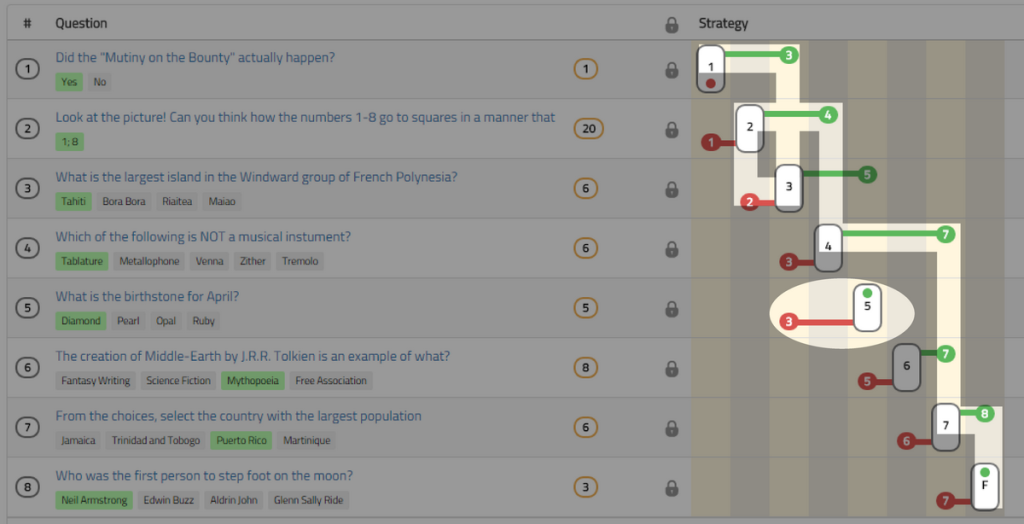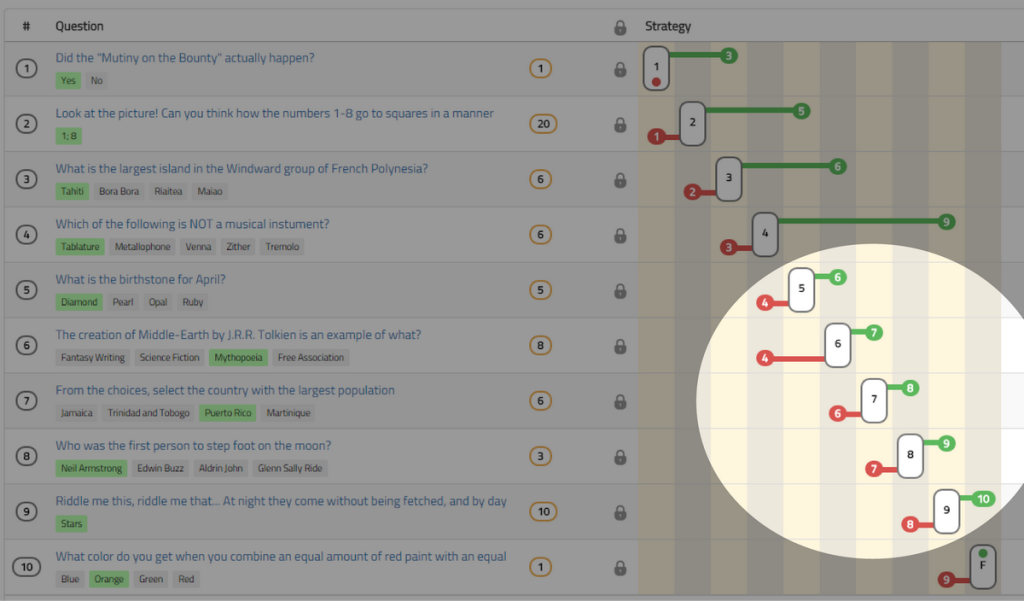In this article I will explain how to create your own real life “Snakes and Ladders” game strategies. This is kind of a second part to the Gamifying tours article. We will be discussing how to create games where a teams movement depends on their answer.
Strategy maps
Before we dig deeper, it is important to know that players can actually see the strategy map that you create with Loquiz. So they know where every answer takes them. In fact, they can plan their route on the tablet using the strategy map view. Each “step” gives one point. Goal is to get to finish with least “steps” So winner is the team who gets LEAST points. You can read more about scoring on support page.
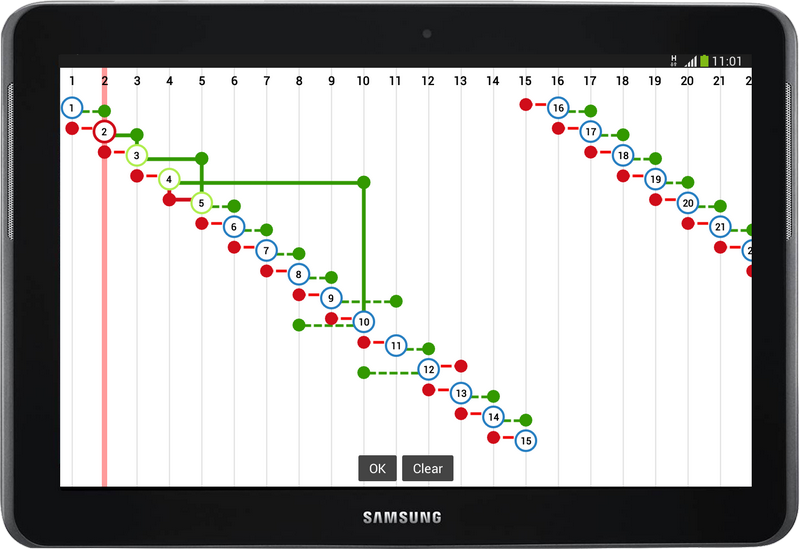
Marking strategy steps in this view will actually show up on the map. In tours this was not really vital – no matter what you do, you still end up at the end. In the case of real games, it is important for players to look at the strategy maps as well.

The idea of the basic outdoor team building game strategy is that players plan their route through the game so that they get to go to finish with as few steps (answers) as possible. Lets look at the following strategy as an example.
In this small scenario the deciding moment is on field number 5. Answering correctly will take you to 6->7->8->9, but answering incorrectly takes the player to 4 and that will take the player all the way to 9. In both cases players will end up at the finish but one has potentially two steps less. So, depending on the game rules the player might willfully answer incorrectly.
Strategy ideas for outdoor team building games
Knowing what you know now, there are some cool things you can do with the strategies. One rule of thumb that I am trying to follow is that I always make moving forward longer than moving backwards so that correct answers are valued more than incorrect. Here are some patterns that you could use to create part of your strategies.
Decision points – to go back or forward
This we covered with the last screenshots, but there are some things to keep in mind. The decision point is built simply by allowing teams to answer wrong and go back one step to have a shortcut forward. I am usually trying to make sure that no lines take players directly onto this shortcut, so players need to end up there knowingly or unknowingly. It might be a wise idea to put a very simple question there so that the decision to go back really needs to be deliberate. Also, mathematically speaking you need to make sure the effect is apparent. Look at the screenshot below.
So we are at 5 and need to make the decision. If you decide to answer all your question correctly from 5 onward (and assuming you are able to do that) you will reach point 9 in four steps (5to6, 6to7, 7to8, 8to9). Deciding to answer incorrectly at 5 means you will ALSO make it in four steps (5to4, 4to7, 7to8, 8to9). So make sure that your decision point gains enough for it to be of any value to players!
Stoppers
Stoppers are cool but cruel. They are fields where you have no way forward, so you need to go back if you wanted to get to finish. If players are not attentive, it might be a hard nut to crack. But for those looking for serious fun, they are a great way to force players to think ahead. Many team trainers are using stoppers actively.
Number 5 is a stopper. So starting from 1 you should try to get it incorrect at 3 so you can move to 2 to 4 to 7 etc. If you answer correctly on 3 you end up at 5 where the only way is back to 3 and 2 etc. This is simple, you can make the way back longer or even switch right and wrongs. Do not set both strategy lines to zero – this would just keep the player there until the game time is over.
Swamp
Swamp is kind of clearly spotted area where the movement is very slow. Usually +1/-1. There should be shortcut over it before the swamp. The swamp actually helps to make sure that your shortcuts are valuable for players to use.
So to explain it 5 to 8 is the swamp in the above drawing. 9 is point to reach.
Starting from 1 you have 1 to 3, 3 to 6, 6 to 7, 7 to 8, 8 to 9 (5 steps through the bog)
Or you could go from 1 to 3, 3 to 2, 2 to 5, 5 to 4, 4 to 9 (5 steps but avoiding the bog)
Or you could go from 1 to 3, 3 to 6, 6 to 4, 4 to 9. (4 steps and only touching the bog).
Additional options
Hopefully with these 3 strategies you can build some fun games. There are some additional options that are worthwhile to point out.
1. You can start a game with a random starting point using dice. This will randomly assign starting points from 1 to 6 for teams. So effectively you will get teams starting in different locations. This works well when running strategy games for large groups.
1. Start field does not have to be 1. In fact it can be anything you choose it to be. You can also set the start to be in the middle of the game, forcing people to work away from the finish to get to the finish. You can start from the last field and ask people to work their way to the beginning.
2. Finish field does not have to be the last field in the game. The same goes with the finish. You can set it any field you want. In fact, usually it is not the last field in the game. This small addition might make the game way harder to play.
You could build games where teams need to start from 20 and work their way to 1. Or start from 10 and work their way to 20, but with going through 1.
One final point
By now you have probably guessed that in this game type players will actually be skipping some of the questions. The rules work best when you actually say that the teams goal is to avoid questions. Meaning that they need to find the shortest way to the finish. Shortest in the sense of answering as few questions as possible.
In the world of games where you are supposed to look for questions this setup makes a pretty cool start for the game:” Get to the finish by avoiding answering questions!”
Related stories

Winter is coming, and most companies will understandably not request outdoor games. It’s especially the case during the high season...

When you offer a Loquiz game, you have two different ways to distribute them: Tickets or username/password/QR. There are fundamental...
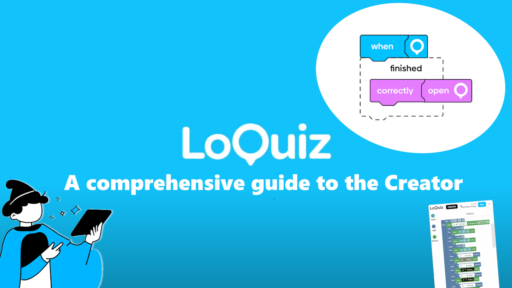
The Creator offers a wide range of possibilities thanks to the implementation of the Blockly interface. Loquiz isn’t just about...
Start free trial to bring your ideas to life
Sign up and create games, tours, team events and educational content that captures peoples' attention
Start from the scratch or use templates to kickstart!

